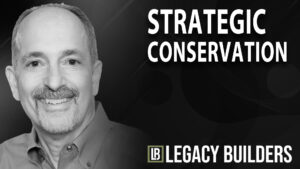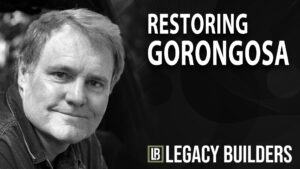IRS Makes It Difficult to Use “Separate Share” Trusts

IRS Makes It Difficult to Use “Separate Share” Trusts
By Mary Kay Foss
California CPA, August 2003
The IRS has issued a series of private letter rulings (LTRs 200317041, 200317043, 200317044) this year that make it difficult to use “separate share” trusts.
A separate share trust is a trust named as an IRA beneficiary that divides by its terms into separate share rule for separate beneficiaries at the death of the grantor.
These IRS rulings, which interpret the final regulations–Sec. 401(a)(9)–make it difficult to get a stretch out of IRA benefits.
Why a Trust as Beneficiary?

Before delving into this particular problem. consider why someone may name a trust as an IRA beneficiary.
A trust is normally named because the IRA owner has some reason for preventing his heirs from receiving the payments directly. A “conduit trust” is a good choice for someone who wants to ensure that his or her beneficiaries do not withdraw the IRA benefits more rapidly than the minimum required distribution (MRD) rules require.
A conduit trust does not accumulate any income; each year’s MRD is distributed to the beneficiary.
A qualified terminable interest property (QTIP) trust may be named as a beneficiary when time grantor wants to control the ultimate beneficiary of the retirement benefits. The QTIP trust is often used in a second marriage situation, but this trust also is chosen by an IRA owner who is concerned about the spouse’s ability to manage the funds or the likelihood that the spouse will remarry and leave the benefits elsewhere.
A QTIP trust often will pay out the MRD to the beneficiary to reduce both income and estate taxes.
An irrevocable IRA beneficiary trust can be used to make sure that estate taxes are paid by the beneficiaries. This is important if the IRA beneficiaries are not the same as the beneficiaries of the rest of the estate.
An executor has a personal liability to see that estate taxes are paid. State law allows an executor to bring suit to enforce a probate law provision that estate taxes be paid pro-rata from the assets subject to tax. Although the trust is irrevocable, the beneficiary designation is not. The owner can change the beneficiary choice.
With increased estate Lax exemptions, the retirement assets may be needed to fully fund a Bypass Trust. This is another reason for using a trust as the IRA beneficiary.
Since the IRA is a wasting asset that involves the payment of extremely high-income taxes, it is not the best choice for Bypass Trust funding. However, it is sometimes necessary because no other assets are available.
Trust Termination Dates
One point to be aware of with your single clients who have named trust is the trust’s termination date.
Often the trust is scheduled to terminate at the grantor’s death. This could cause an acceleration of IRA benefits rather than the desired “stretch.” Single clients with adult children as beneficiaries may be better off naming them directly.
Can You See Through the Trust?
MRDs are paid out over the life expectancy (as determined by the IRS tables) of the beneficiary. A trust is treated as having a life expectancy if it is considered a “see-through” trust. A see-through trust must meet these four requirements:
The trust must be valid under state law;
The trust must be irrevocable or become irrevocable at the death of the grantor;
The trust beneficiaries must be identifiable; and
Documentation must be provided to the custodian of the IRA by Oct. 31 of time year after the owner dies.
There is a short window of opportunity for trusts that did not qualify because they had not furnished the documentation on a timely basis. Trustees of those trusts have until Oct. 31, 2003, to submit the documentation.
The MRDs for a “see-through” trust are paid out over the life expectancy of the oldest beneficiary. This is the problem that came out with the rulings mentioned at the start of this article.
The Current Problem
The proposed regulations that were issued in January 2001 allowed a trust that was split by its terms to use the separate life expectancy of each sub-trust beneficiary. The final regulations do not contain such a provision and the rulings make it clear that this was not an accidental oversight.
The IRS position is that the measuring life is determined by the oldest beneficiary, which was named as of the date of the owner’s death that is still a beneficiary on Sept. 30 of the following year. A trust that is created at the death of the owner is not a named beneficiary on the date of death.
If, for example, someone named a trust that would split into three trusts at death–one for the spouse, one for the child and one for the grandchild based upon these rulings, all three trusts would receive MRDs based upon the spouse’s life expectancy.
Splitting Trusts Before Death
The solution is to establish separate trusts before the owner’s death. For instance, the beneficiary designation would read: “One-third to the trust for my spouse and if she predeceases or disclaims, this one-third shall be added to the other two-thirds; one-third to the trust for my son Jeffrey. If he predeceases or disclaims this one third shall be added to the other two thirds; and one-third to the trust for my granddaughter Monica.”
The actual trust agreements need not be furnished to the custodian until after the IRA owner’s death.
Creating separate trusts, as separate entities would not have been required under the 2001 proposed regulations. These designations and the actual trust agreements can be changed at any time before the death of the IRA owner.
The trusts designated as beneficiaries also generally allow the IRA to be split so that a separate IRA is payable to each trust. This step has been approved in the private letter rulings issued to date. This provides some help if one beneficiary wants to take benefits out faster than the table suggests but doesn’t help at all if a “stretch out” is desired.
Plenty of Options
What should you recommend for your clients based on these developments? This depends on what your client needs.
If the biggest concern is wasting part of the estate tax exemption, the spouse can be named as the beneficiary with the family trust as the contingent beneficiary.
If the spouse disclaims a fraction of the IRA to fully fund the Bypass trust, the spouse’s life expectancy is likely to be used for MRDs.
If the concern is to provide a lifetime income for the surviving spouse with the balance to the children of the owner’s first marriage, a QTIP trust can be named as the beneficiary.
If the owner intends to benefit children but wants to prevent them from withdrawing the funds faster than the MRD, a conduit trust could be named as a beneficiary. This also may be a solution when a minor child is the intended beneficiary.
Without a trust, the beneficiary designation for a minor also should appoint a custodian for the minor under the Uniform Transfers to Minors Act.
Life Expectancies According to the IRS
When the IRS issued proposed regulations in 2001, the preamble stated that the life expectancy tables, which had been in place since 1987, did not need updating. However, Congress passed a law five months later directing the IRS to change the tables.
The current tables are found in the MRD regulations. For the most part, lives have increased by about one year from the 1987 version. The single life expectancy for a 70-year-old is now 17.0 (it was 16.0 under the old tables). If someone is 111, the table says they have a 1.0-year life expectancy. The prior version was a .9-year remaining life.
The IRS has the ability to update the tables again. Will it take another act of Congress?
We hope you found this article about “IRS Makes It Difficult to Use “Separate Share” Trusts” helpful. If you have questions or need expert tax or family office advice that’s refreshingly objective (we never sell investments), please contact us or visit our Family office page or our website at www.GROCO.com. Unfortunately, we no longer give advice to other tax professionals gratis.
To receive our free newsletter, contact us here.
Subscribe our YouTube Channel for more updates.

Alan Olsen, is the Host of the American Dreams Show and the Managing Partner of GROCO.com. GROCO is a premier family office and tax advisory firm located in the San Francisco Bay area serving clients all over the world.
Alan L. Olsen, CPA, Wikipedia Bio

GROCO.com is a proud sponsor of The American Dreams Show.

The American Dreams show was the brainchild of Alan Olsen, CPA, MBA. It was originally created to fill a specific need; often inexperienced entrepreneurs lacked basic information about raising capital and how to successfully start a business.
Alan sincerely wanted to respond to the many requests from aspiring entrepreneurs asking for the information and introductions they needed. But he had to find a way to help in which his venture capital clients and friends would not mind.
The American Dreams show became the solution, first as a radio show and now with YouTube videos as well. Always respectful of interview guest’s time, he’s able to give access to individuals information and inspiration previously inaccessible to the first-time entrepreneurs who need it most.
They can listen to venture capitalists and successful business people explain first-hand, how they got to where they are, how to start a company, how to overcome challenges, how they see the future evolving, opportunities, work-life balance and so much more..
American Dreams discusses many topics from some of the world’s most successful individuals about their secrets to life’s success. Topics from guest have included:
Creating purpose in life / Building a foundation for their life / Solving problems / Finding fulfillment through philanthropy and service / Becoming self-reliant / Enhancing effective leadership / Balancing family and work…

MyPaths.com (Also sponsored by GROCO) provides free access to content and world-class entrepreneurs, influencers and thought leaders’ personal success stories. To help you find your path in life to true, sustainable success & happiness. It’s mission statement:
In an increasingly complex and difficult world, we hope to help you find your personal path in life and build a strong foundation by learning how others found success and happiness. True and sustainable success and happiness are different for each one of us but possible, often despite significant challenges.
Our mission at MyPaths.com is to provide resources and firsthand accounts of how others found their paths in life, so you can do the same.
The AI Revolution: Avoiding a Future Controlled by the Few
Artificial Intelligence (AI) is at an inflection point. While most discussions center around the potential and risks of AI, Aldo Carrascoso, CEO and Co-Founder of Vivum AI, offers a different perspective—AI is at its own “War of Currents” moment, much like the battle between AC and DC electricity in the early 20th century. In a…
Partnerships for Strategic Conservation – Barry Gold
Barry Gold Outlines a Bold Vision for Conservation and Sustainable Development Africa is on the brink of a transformation—one that will define the future of the continent and, ultimately, the planet. With its population projected to double from 1.3 billion today to 2.2 billion by 2050 and reach nearly 4 billion by 2100, the demand…
Restoring Gorongosa National Park
Greg Carr’s Mission to Restore Gorongosa National Park: A Story of Conservation and Community Greg Carr’s journey from a successful technology entrepreneur to a dedicated philanthropist restoring Mozambique’s Gorongosa National Park is nothing short of remarkable. What began as a search for a meaningful way to give back has evolved into one of the most…
The Ownership Revolution: How ESOPs Can Strengthen the Middle Class
The Ownership Revolution: How ESOPs Can Strengthen the Middle Class For decades, the American middle class has been the foundation of economic stability, embodying the aspirations of millions. Yet, as Chester Woolley eloquently highlighted in his recent speech, this once-thriving segment of society is in decline. “The middle class seems to be shrinking. It doesn’t…




